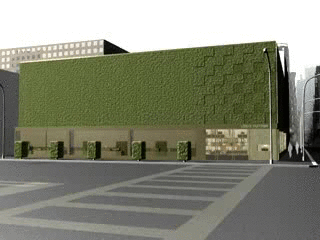in the early 2000's iGNITIATE created the programmable facade system called TOPIADE for Louis Vuitton's architecture dept later being expanded upon by MIT's Tangible Media Lab and interviewed by Sean Follmer at Fast Company in their inFORM movable pixel table. The key components of projection, scanning and addressable blocks was originally researched at the Xerox PARC Labs by Brent Welch, Scott Elrod, Tom Moran in their seminal paper in 1993 on projection and tracking systems in real time and further extrapolated by the Microsoft Kinect system for real time scanning and interaction.
The system has evolved through the inFORM's capability to interpret 3d objects and render them on the table system in 2.5D (8 of 9 sides of the 3D space) as the table bottom cannot be fully separated. What does this mean for design, telepresence and immmersive systems? Only as much as the consumer market will demand as currently 3D projection systems are the defacto standard for interactive algorithmic modeling environments such as Grasshopper. Technically incredible. What does this mean for art and design? The same that TOPIADE meant for the art of live plant display.










%2BCulture.jpg)




%2BDesign%2B-%2BDesign%2BPhysical%2B%26%2BDigital%2BProducts.jpg)
